20+ Amazing Things to Do in Bonaire in the Caribbean Netherlands
Disclosure: This blog is reader-supported, and some posts contain affiliate links. If you make a booking, I may earn a small commission—at no extra cost to you. Thank you for keeping me writing and doing what I love!
From scuba diving in healthy coral reefs to road-tripping the island in awe of thousands of pink-hued flamingos and pricky Kadushi cacti, there are so many things to do in Bonaire.
Whether you’re a land or sea creature, Bonaire Island boasts some of the world’s best activities and sports!
In the same week, you can go diving, kitesurfing, horseriding, kayaking, paddleboarding, catamaran sailing, snorkeling, and more. And did I mention caving, hiking, and land sailing?!
That’s right — both land and sea activities abound on Bonaire!




The island is mostly renowned abroad for being one of the top destinations worldwide for diving, but, as you’ll discover for yourself, there is much more to see and do on the island than you might expect.
Even if you are a non-diver, Bonaire is rich and diverse in its landscapes and culture as it is its breadth of eco-adventures!
So whether you’re visiting Bonaire on a diving vacation or are on the island to relax and unwind, I’m going to share with you how this eco-centric island has everything you could want or need in a Caribbean vacation.
Read more below to discover the top things to do on Bonaire Island! 🇧🇶
Best Things to Do on Bonaire Island


1. Scuba Dive Bonaire’s Stunning Underwater World
In case you didn’t know it already, Bonaire Island is synonymous with scuba diving! From shore dives to boat dives to shipwreck diving to night diving, there are so many incredible scuba diving sites in Bonaire.

With 85+ dive sites—54 being shore dives—Bonaire is considered the shore diving capital of the world. Since 1962, Bonaire’s prized reefs have been actively protected inside the Bonaire National Marine Park, which extends nearly 6700 acres and includes 350 species of tropical fish and 57 species of coral.



During our week on Bonaire, we dove with VIP Diving at their house shore dive, Sebastian’s, and did a boat dive with Dive Friends at the dive site called Joanne’s Sunchi located off the shores of Klein Bonaire (“Little Bonaire”)—the uninhabited island across from the mainland’s capital of Kralendijk.
As for what marine life you will see in this diver’s paradise, you can expect to find sea turtles, tarpons, barracuda, seahorses, shrimp, angelfish, eagle rays, and eels, among other tropical fish big and small.
On our next trip, I would love to check off Hilma Hooker—a popular wreck dive—plus other famed dive sites off my Bonaire diving bucket list! Learn more about all the different dive sites on Bonaire here.
2. Explore the Washington Slagbaai National Park

One of our favorite things to do in Bonaire is explore the Washington Slagbaai National Park. This vast and wild ecological reserve covers the entire northwest of Bonaire Island.
In fact, this protected park, established in 1969—the first and oldest in the Dutch Caribbean—is home to rosy flamingos, idyllic beaches, hidden bays, blowholes, cactus forests, volcanic peaks, and hundreds of species of birds, plus iguanas and lizards, and more!
But before you set out to visit the park, make sure to properly prepare.
Planning your route ahead is a good idea, as the park is huge; it covers over 20% of the entire island! That said, you may need an entire day (or two) to enjoy it.
The dirt road cutting through the park is one-way only, so must decide to take the short route (1.5 hours) or the long route (2.5 hours). Depending on which route you take will lead you to different interest points in the park. Renting a 4WD or high-clearance vehicle is a must.
Tips: Carry lots of water (one gallon per person), reef-safe sunscreen, eco-friendly bug repellent, a swimsuit, snacks (or a picnic lunch), and a map at the park entrance. There is no cell coverage inside the park. Be ready at the park entrance when it opens at 8 am to make the most of the morning. Your nature fee ($45) already covers the cost to enter the park.
Below are some of our favorite things to do from our two road trips in the Washington Slagbaai National Park!
2A. Hike Bonaire’s Tallest Peak – Mount Brandaris
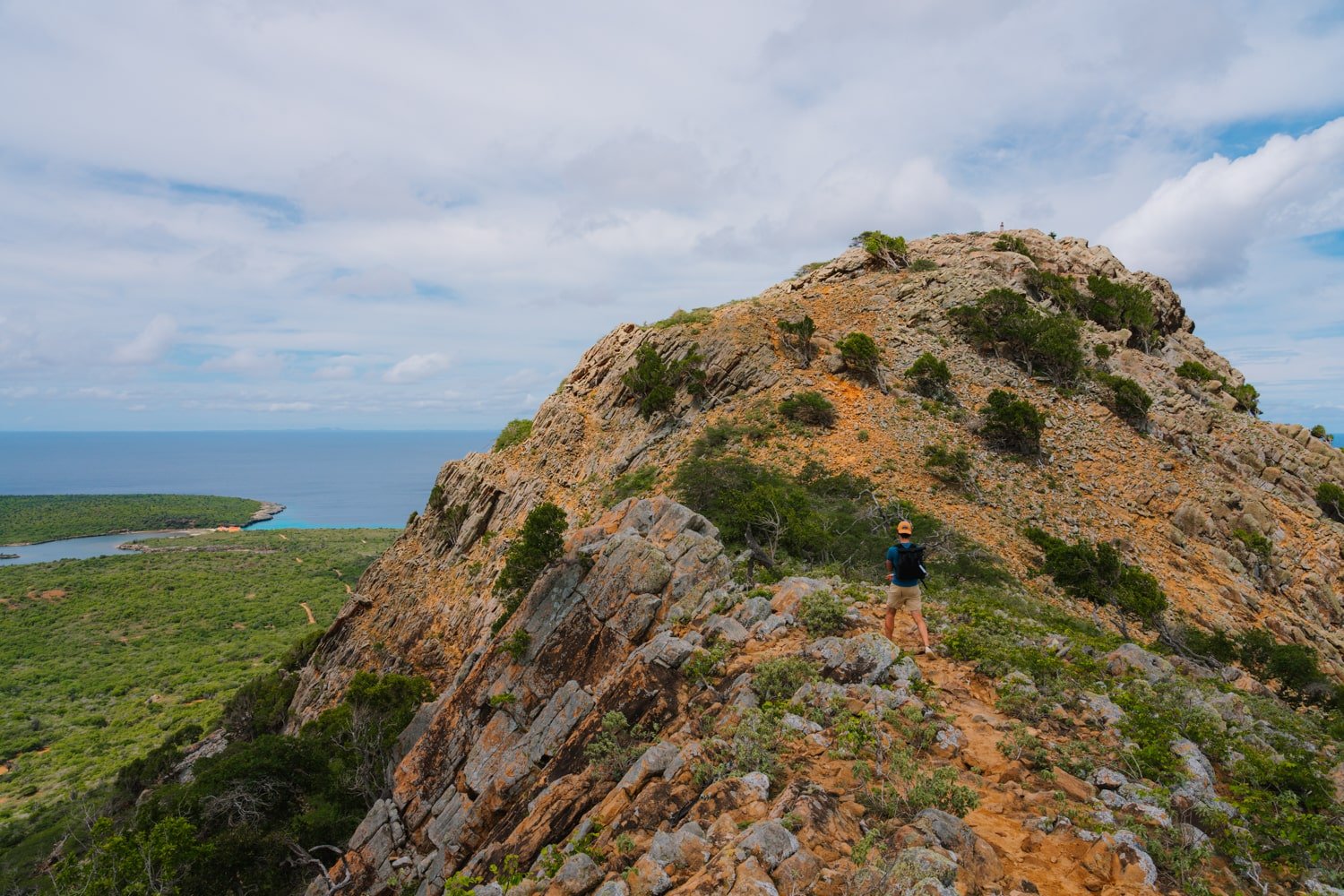

Mount Brandaris, the tallest hill on Bonaire Island at 241 m (790 ft), offers hikers the opportunity to summit the island’s highest peak. While 241 m doesn’t seem very high, the climb to the top feels otherwise!
The effort is worth it, however, as the views from the top are the best you can find on the island.
Take the park’s short route to reach the Subí Brandaris Trailhead. The hike itself meanders through a forest of prickly cacti (watch your step!) up to the rocky summit. Plan for at least one hour to go up and 45 minutes to hike back down.
There is little shade, and none during the scramble to get to the top, so extra water, a hat, sunscreen, and sunglasses are essential.
🥾 Read more tips and trail details in my guide to hiking Brandaris.
2B. Lounge at boka Kokolishi


Boka Kokolishi is famed for its black-hued sands and dramatic waves which you can watch from the safety of its natural pool. This hidden bay is a gem and worth stopping for! To get here, take the long route and stop at the Boka Kokolishi sign.
2C. Snorkel at Wayaka II
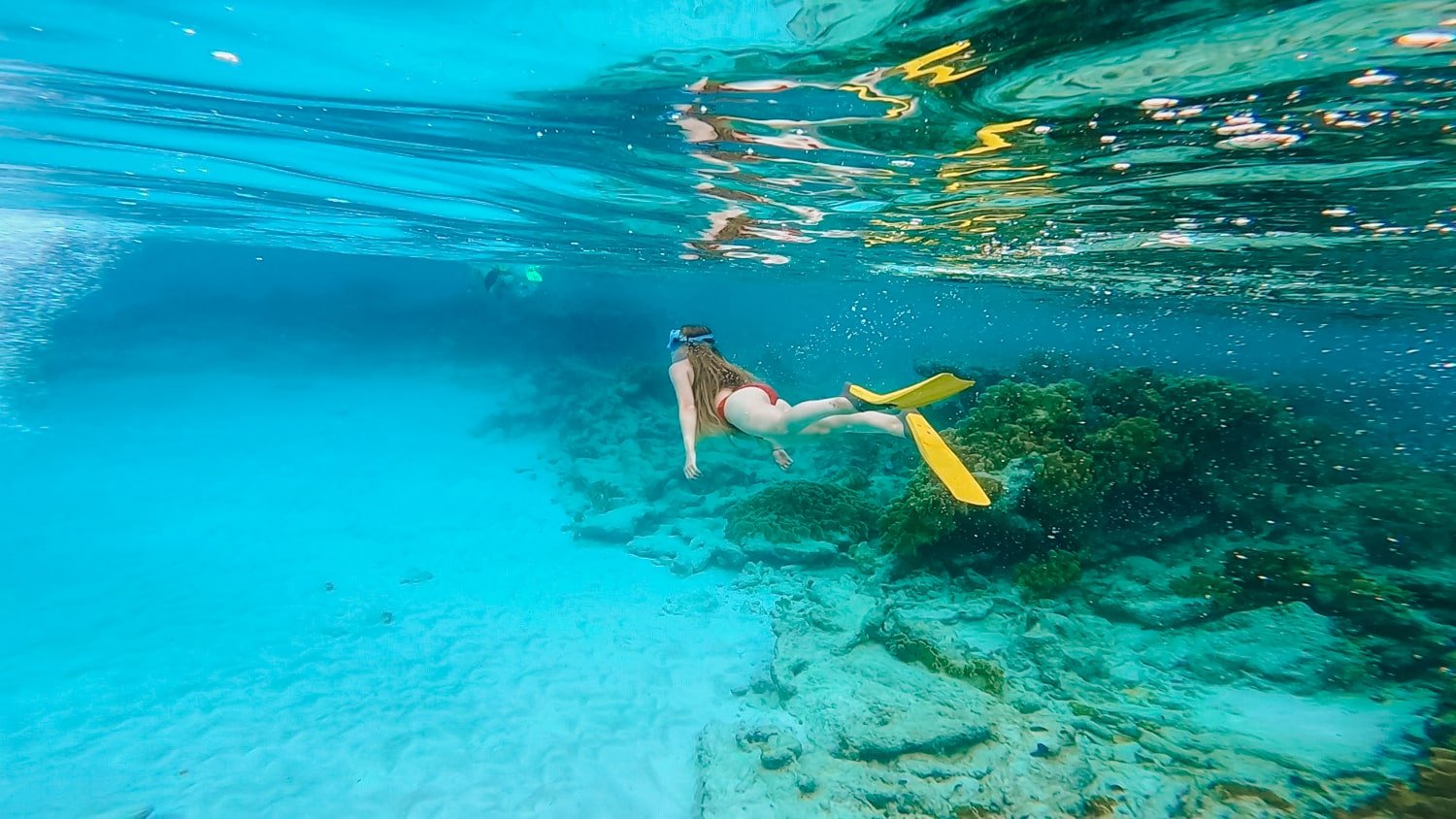
The beaches of Wayaka I, II, and III are all worth visiting, but it’s Wayaka II that steals the show for its lively reef ideal for snorkeling.
2D. Cliff Jump at Boka Slagbaai


Boka Slagbaai Beach is a gorgeous beach with turquoise waters and a coral garden.
The iconic yellow building that contrasts with the waters once served as the island’s main port and storage house where salt was stored and goats were slaughtered.
On the left side of the beach, you’ll see a cliff that looks perfect for jumping off of—and it is!
The trail to reach this spot is on the far side of the parking lot.
3. Go Land Sailing!
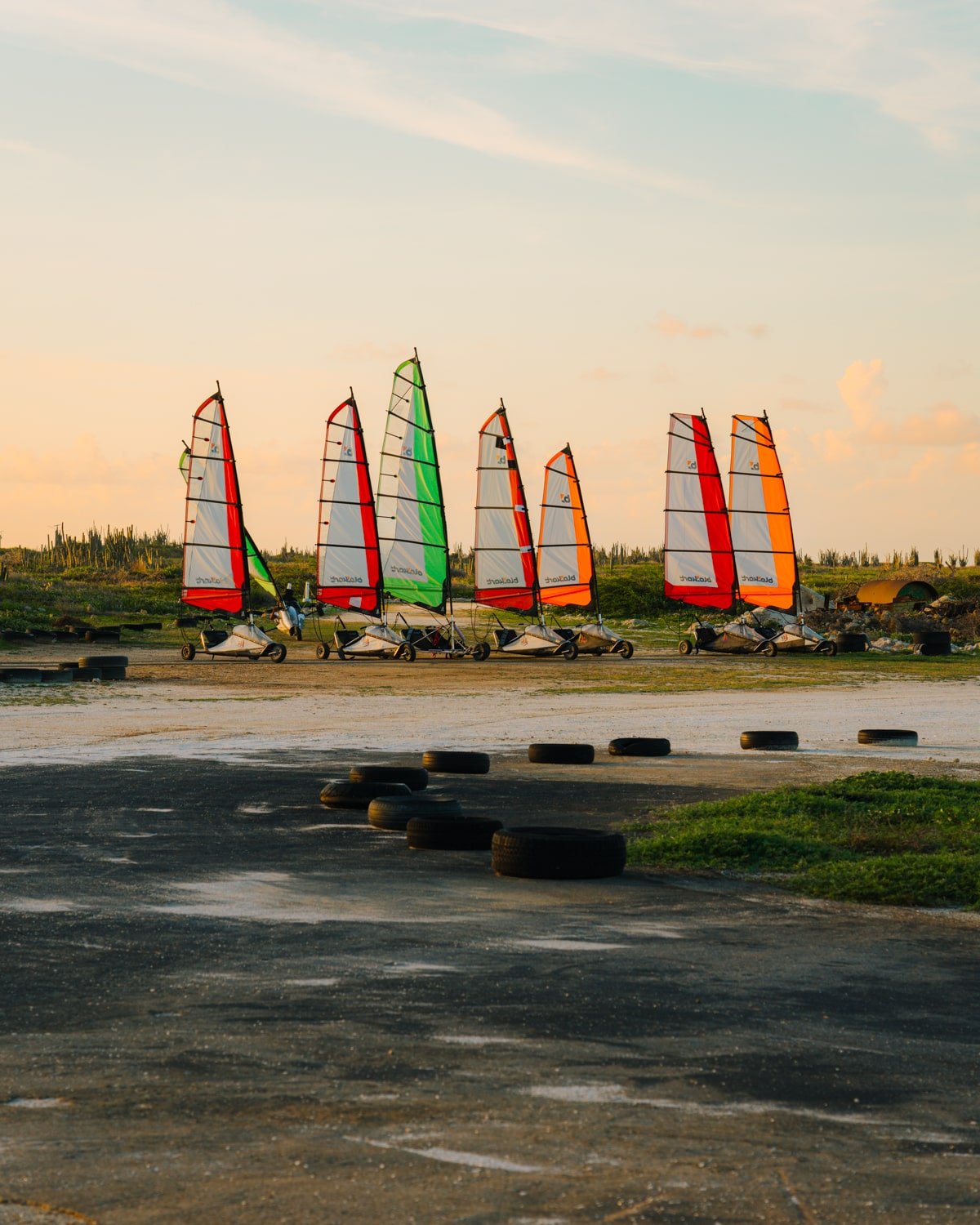


Landsailing, blokarting, sand yachting—whatever you wish to call it, is a fun and eco-friendly activity to do in Bonaire!
Thanks to the strong winds on the east side of the island, Bonaire is perfect for landsailing.
All you need is wind energy to power your sail so you can cruise off into the sunset! It’s a fun thing to do on Bonaire for all ages—no prior experience is needed or required.
Donna and the blokart team are all awesome and will have you leaving with what they call the “blokart grin!”
🏎 Click here to book this fun eco activity with Bonaire Landsailing Adventures! Or read and learn more about landsailing on Bonaire in my guide.
4. Take a Road Trip Around the South Island
Bonaire’s landscapes vary widely from north to south and east to west.

While the northern part of the island is covered in cacti, rolling hills, and some of Bonaire’s best beaches, the southern part of the island is flat and desert-like, with an endless shoreline ideal for diving and snorkeling, salt pans, historical slave huts, flamingos, and the occasional wild donkey.
And the best way to see it all is on a self-guided road trip! Below are things to do on the south side of Bonaire.
4A. Marvel at the ‘White Mountains’ (Salt Ponds)
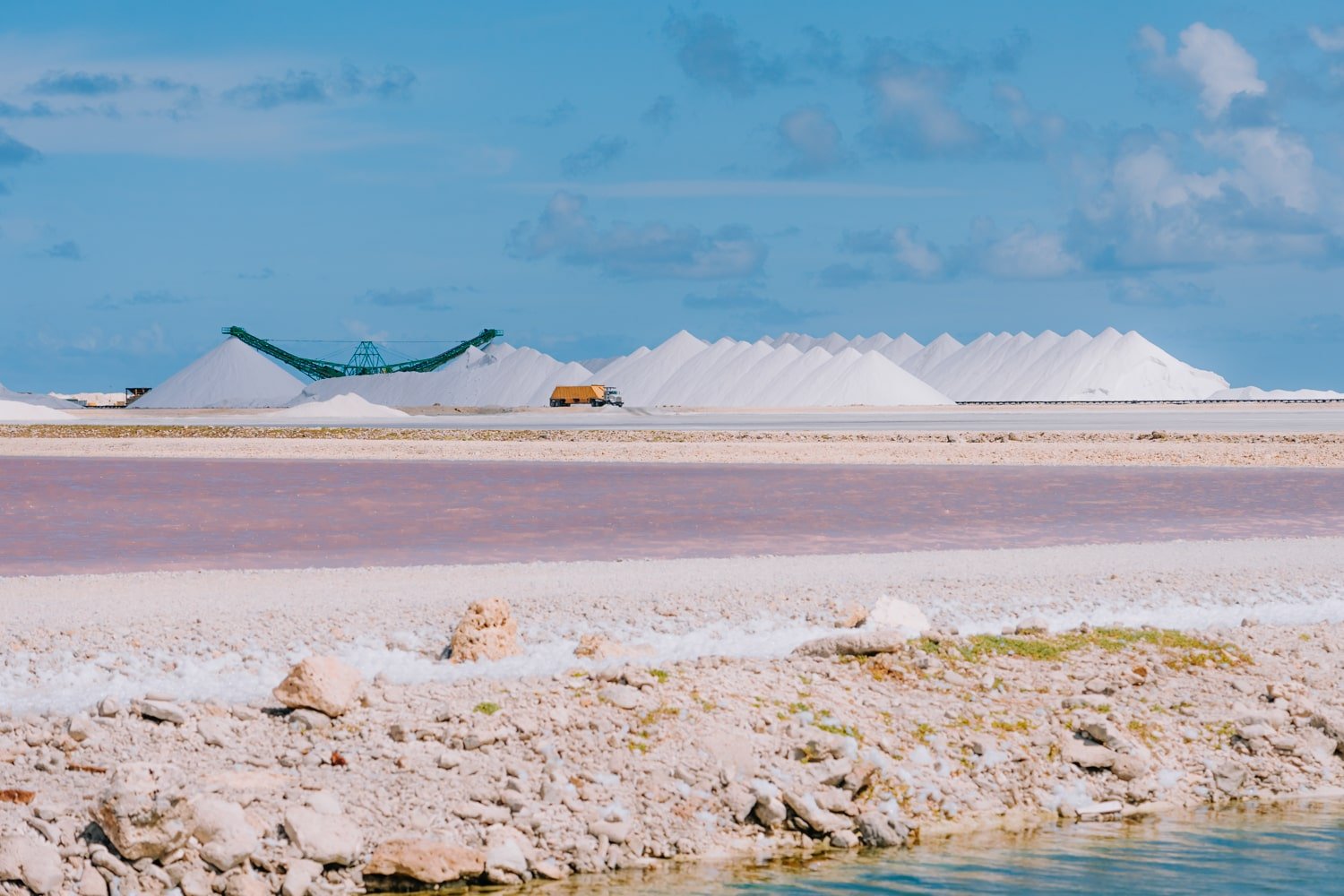

The ‘white mountains’ you see flying into Bonaire are actually mounds of salt, though the locals refer it to as white gold due to its historical significance and economical importance.
Bonaire salt ponds are one of the island’s top attractions, despite being privatized and inaccessible to tourists. They belong to the American-owned company Cargill, the salt producer of Bonaire.
On your road trip, you can take photos of the salt pyramids, of the Bonaire salt pier where salt is loaded onto ships (which doubles as a great diving/snorkeling spot), and of the flamingo sanctuary which Cargill helps maintain and protect.
4B. Visit the Slave Huts
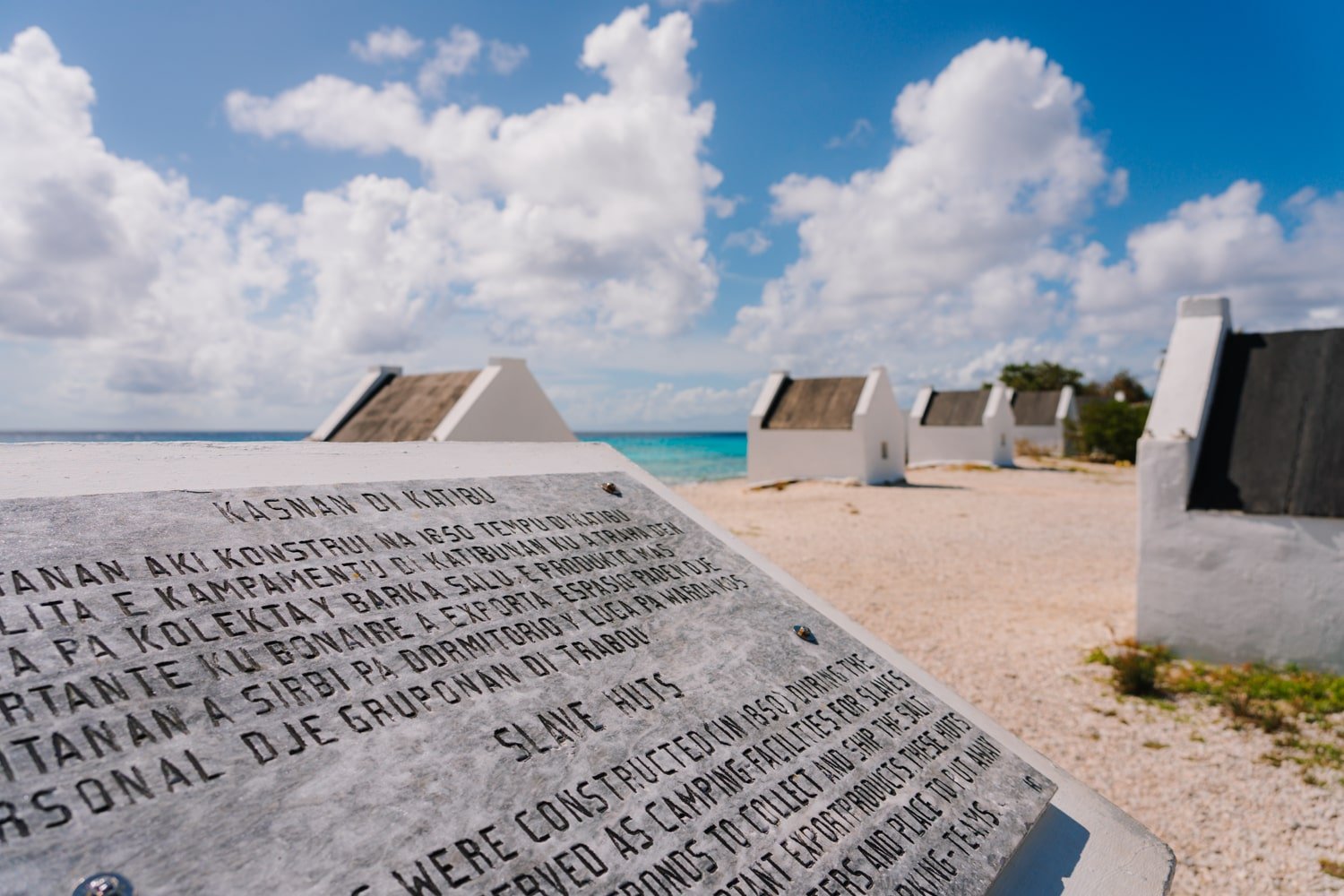
The slave huts of Bonaire are the historic living quarters of the African and Indian slaves who harvested the salt pans in the mid-1800s.
As you’ll see during your visit, the one-door one-window huts, originally built from wood and then eventually stone, are tiny; yet, somehow, they were meant to be the sleeping quarters for up to six people.


Next to the huts stand tall prisms—the same color as the adjacent huts—which indicated, by color code, to offshore ships the correct area to dock for loading the different quality of salt.
The huts are striking to see—a pop of yellow, red, or white against the turquoise waters in front—but a grim reminder of humanity’s tragic Triangular Slave Trade.
Slavery was abolished in the Antilles in 1863.
4C. Pekelmeer Flamingo sanctuary
Flamingos are Bonaire’s national bird, and it’s easy to see why. Not only are they mesmerizing and whimsical creatures, but they are special to the island for other reasons.



That’s because Bonaire is one of only four designated locations in the entire world where flamingos breed. On the island, you can see a flamboyance of flamingos into the hundreds or even the thousands during breeding season from January to July each year.
The Flamingo Sanctuary is a protected Ramsar site. As such, tourists are not allowed within the area but can observe the flamingos in their natural habitat from the roadside.
Please remember to visit the flamingos with care:
- 🛸 No drones allowed
- 🐕 Keep dogs on leash at all times
- 🚫 No trespassing to get closer to the flamingos
If you wish to take photos or see the flamingos up close, I suggest bringing a telephoto or zoom lens and a pair of travel binoculars.
4d. Willemstoren Lighthouse
Finally, one of the last attractions to see on your south island road trip stands at the southern tip of the island.
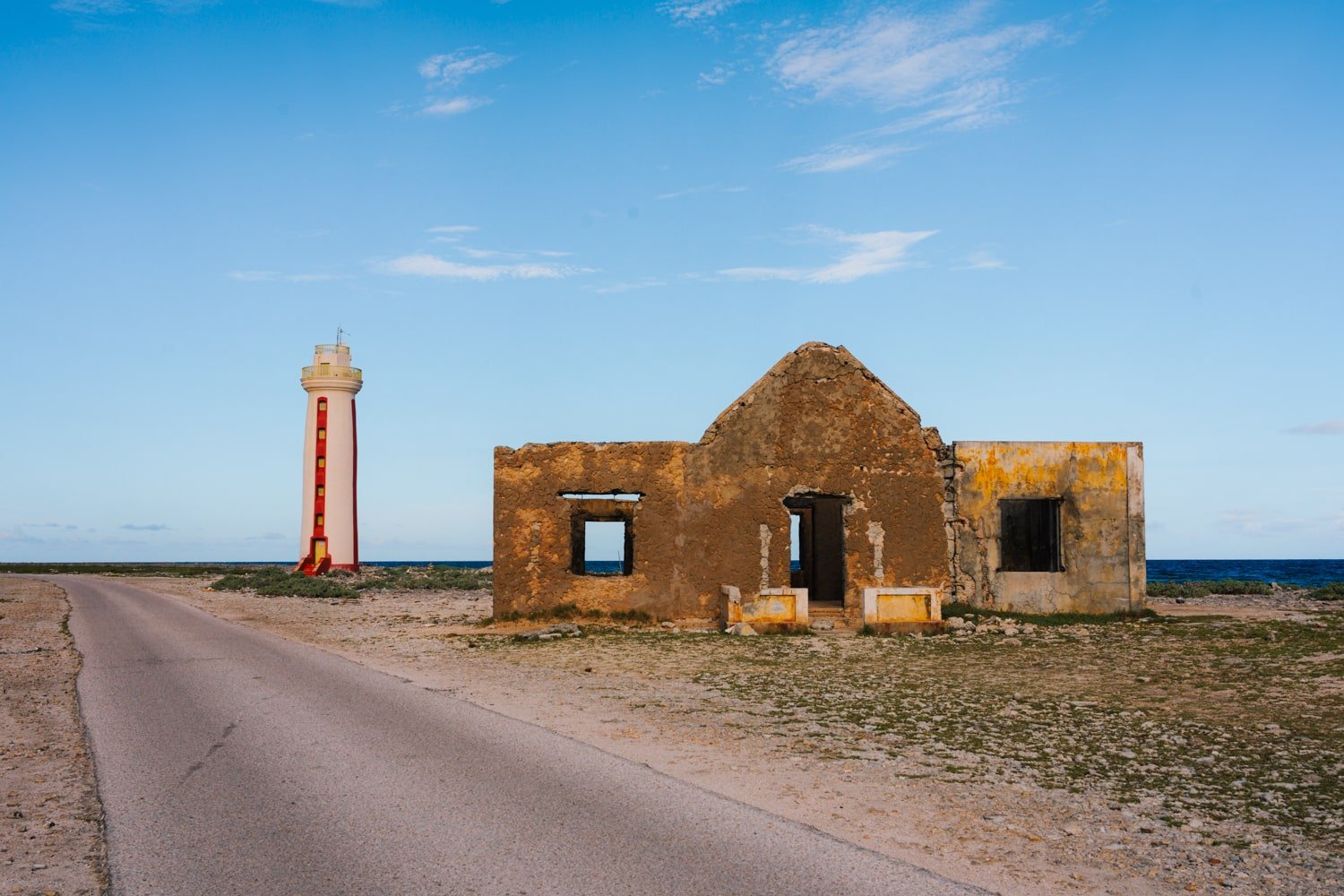
The Willemstoren Lighthouse may not look like much, but it’s the oldest standing lighthouse on Bonaire—and that deserves some credit! Beside it is an abandoned stone building that makes for aesthetic photos; I read it may have been the living quarters of the lighthouse guard.
This spot is also a known shore diving site for advanced divers who are sure-footed enough against the wind to enter the water.
5. Visit the Donkey Sanctuary
You will see a few wild donkeys roaming Bonaire Island, but the majority of them can be found under the care of the Donkey Sanctuary Bonaire.

The Spaniards brought donkeys to Bonaire Island in the 17th century to use as hard labor. But, as Marion Jeursen explained to us during our visit, the donkeys were set free unto the island when industrialization quickened and they were no longer required.
Since wild donkeys are not endemic to Bonaire, they do not adapt well to the desert climate; many die of dehydration and starvation, get into car accidents or become victims of human cruelty.
The non-profit sanctuary currently cares for 770+ donkeys, providing them fresh food, water, medical care, and plenty of space to be safely wild in.

For a donation of $10, you can drive through the expansive Donkey Sanctuary with your windows rolled down. However, be warned—many curious and fuzzy snouts will poke in for treats or pets!
Inside the sanctuary, you will also find tortoises and injured flamingos that you can say hello to up close.
If you are an animal lover, you will feel right at home here.
6. Snorkel with Sea Turtles at 1000 Steps
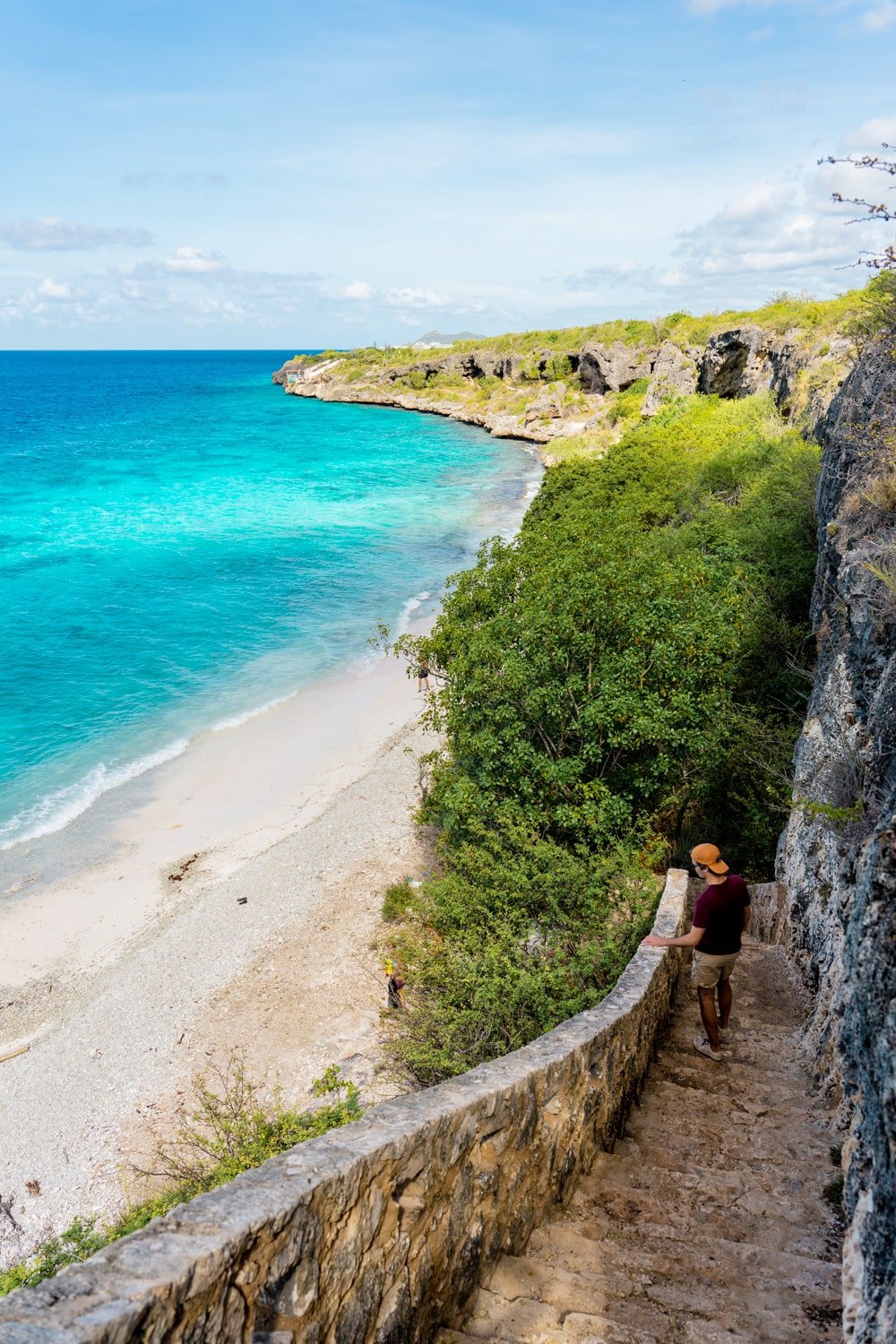



The dive and snorkel site of 1000 Steps has built a reputation for itself. Many snorkelers and divers will spot sea turtles here (even if we didn’t).
Whether you get lucky and are graced by a sea turtle’s presence or not, this is a must-see spot on the island. The steps leading down to the beach actually count around 70-something, not 1000—though if you are a diver with all your equipment on, it may feel like it on the way back up!
Since the road in is one-way, make sure to finish up and not leave anything valuable behind. Otherwise, you’ll need to drive around the highway to get back to 1000 Steps which will take 30 minutes!
7. Stroll Downtown Colorful Kralendijk

As the island’s main port and capital city, there is a lot to see and do. Take a walk down Kaya Grandi and you’ll quickly fall enchanted with this colorful and quaint strip.
Everything from historical parks and fish bars to beachy cafes and boutiques can be found in Kralendijk.
If you wish to do a bit of shopping, the best time to go is after 8 am—don’t forget, many of the local businesses are working on island time!

I particularly loved the Moana Surf Shop for all its sustainable products. (It’s where I found my Indosole flip-flops made out of recycled tires!)
For eating out and strolling the sidestreets for eclectic bars, breweries, and clubs, head out around sunset. You won’t regret ordering the “Fishcuterie” platter from El Pescado Fishbar and grabbing an after-dinner beer at La Cantina Cerveceria.
Read More: The Best Restaurants & Places to Eat on Bonaire Island 🍴
8. Guided Yoga on the Beach
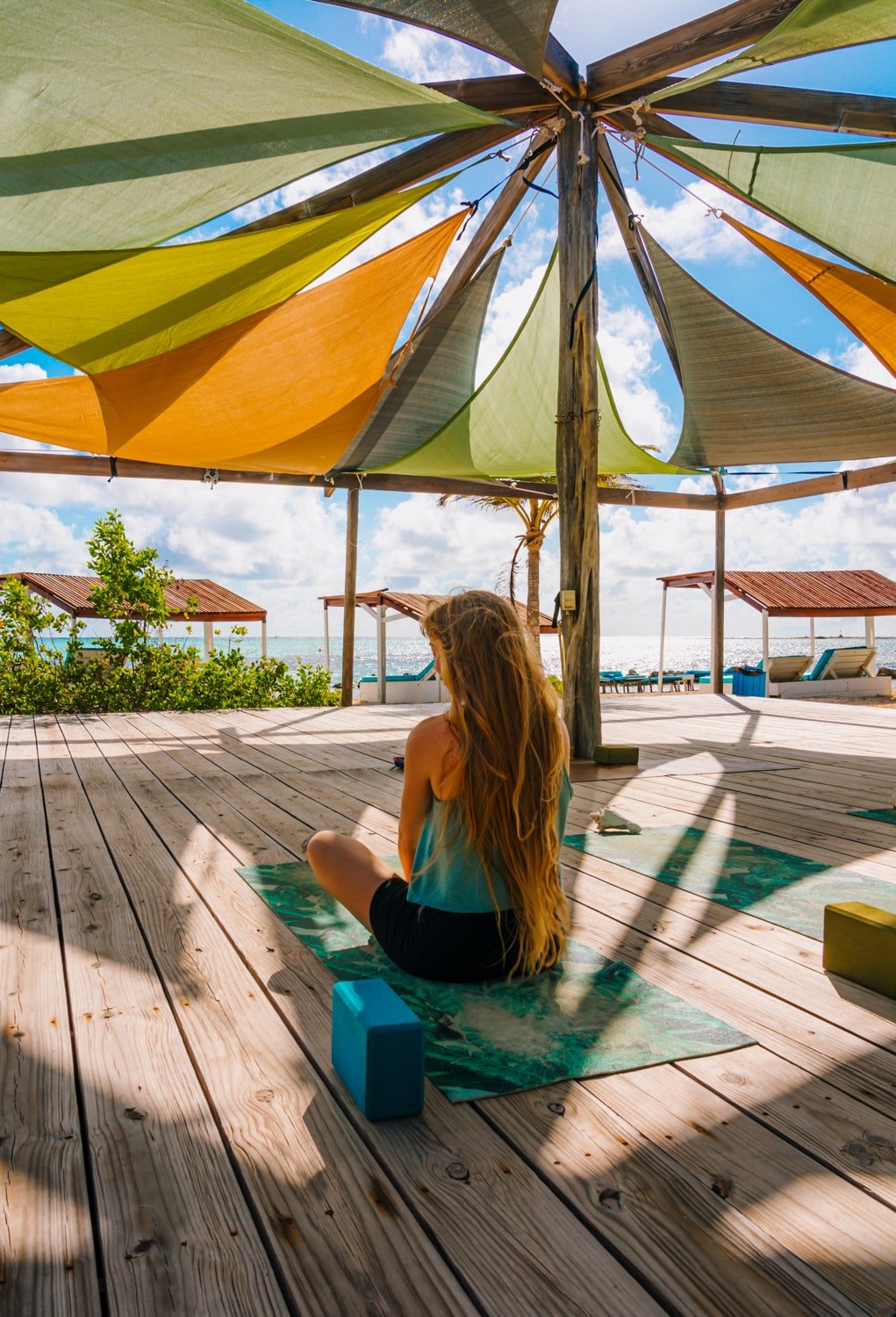
During our time on Bonaire, we had the pleasure of participating in not one, but two guided yoga sessions!
The first session, with Gwen from Zest for Life Yoga, was set at the idyllic Sorobon Beach Resort. The setting was perfect for our Hatha Yoga Flow. Gwen was a fantastic teacher. Be prepared to sweat—in the best way!
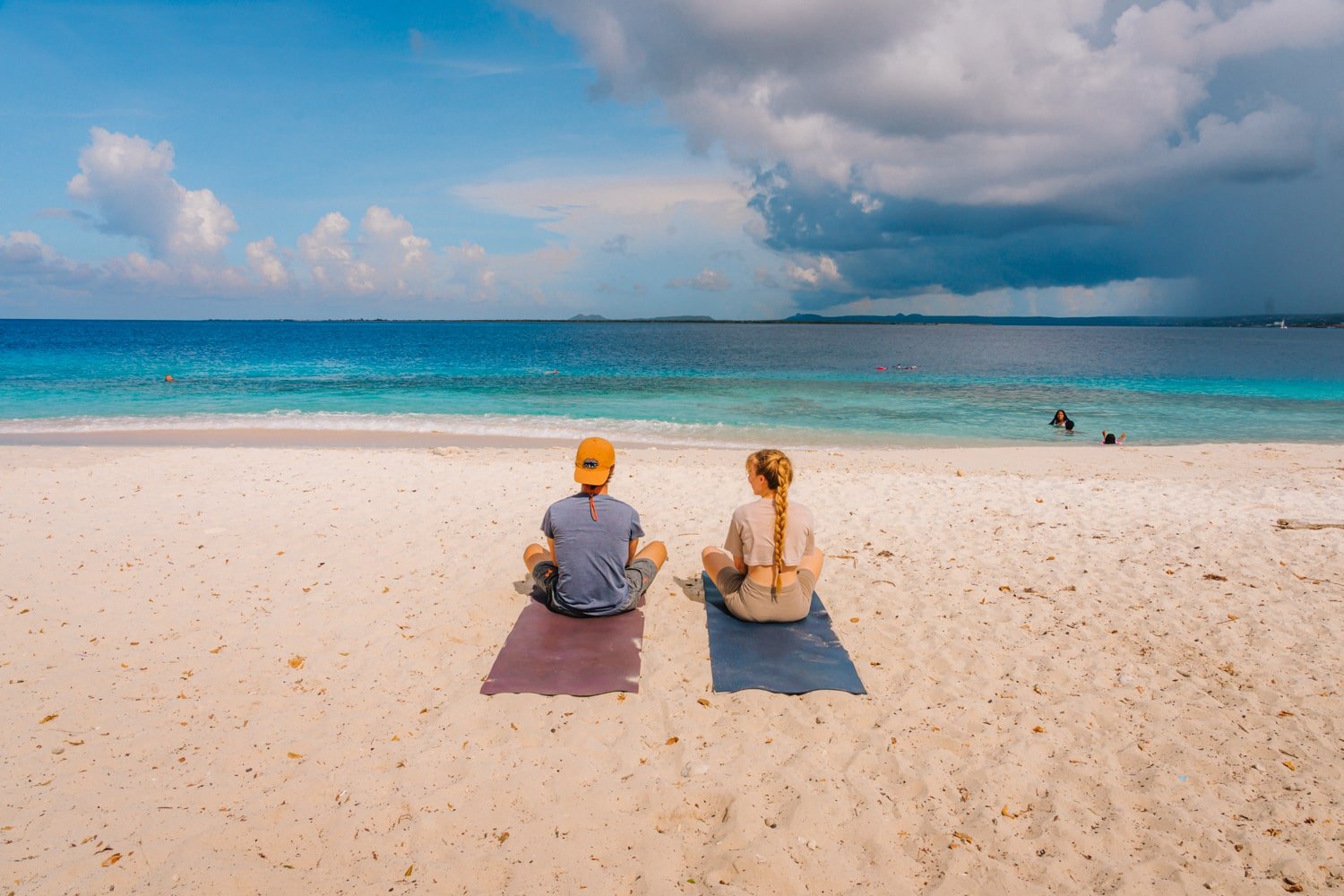
Later in the week, we did another yoga session on Te Amo Beach with Charley from Flowmingo Studio. This session was relaxing and perfect for stretching the sore muscles that we earned earlier in the week!
Afterward, we set out on a paddleboard excursion, which I’ll talk more about further down in this guide.
Also Read: Where to Stay on Bonaire: An Eco Resort Guide 🌴
9. Visit the Village of Rincón
Even though Amerigo Vespucci discovered and claimed Bonaire for Spain in 1499, it wasn’t until 1527 that the Spaniards settled Rincón, the first town of Bonaire.
Rincón is thus Bonaire Island’s oldest village, dating back centuries.

In Spanish, rincón signifies corner. The Spanish named the village this due to the fact that from land or sea, Rincón remains hidden from the eye. It is the only part of the island that is like this, so it offers protection and stealth from invaders.
To see this for yourself, drive up to the Altamira Unjo for a panoramic viewpoint overlooking Rincón.
There isn’t much to do or see in Rincón, apart from wandering the town, stopping by the distillery (see next), visiting the church, and grabbing a bite to eat. Nonetheless, it’s amazing to be able to walk the streets and imagine how the village already existed nearly 500 years ago.
10. ‘Drink a Cactus’ at the Cadushy Distillery

As you waltz through the doorway and enter the open-air courtyard of the Cadushy Distillery in the heart of Rincón, one of the bartenders will likely greet you with, “Have you ever drank a cactus before?” to which you might reply, “I believe not!” or “I don’t think I have!” (which was my casual response).
The Cadushy Distillery is the island’s only distillery, and perhaps the only place in the world where you can try Kadushi cactus liqueur—named the “Spirit of Bonaire” by Master distiller and founder, Eric Geitman.


During your visit, you will get to learn all about the small-batch production and distillation process on a brisk 8-minute tour. Afterward, you will get to sample more liqueurs and spirits at their bar.
While the distillery began with only the Kadushi cacti liqueur, today it boasts a range of liqueurs made with natural flora inspired by each of the Dutch Caribbean islands—calbas and soursop for Curaçao, guava and hibiscus for Statia, etc—plus their own award-winning rum (Rom Rincón), vodka, and whiskey.
11. Tour Bonaire’s Hidden Caverns & Caves
Bonaire is as diverse in the sea as it is on land; there are approximately 400 caves and caverns on Bonaire Island. Many are unexplored, but there are a few that can be toured with a certified guide.

To protect this important ecological wonder and preserve culture and history, Bonaire’s Cave & Karst Nature Reserve project is working to protect and manage the cave system through conservation, research, and sustainable tourism.
Currently, only visitors with a CARIBSS (Caribbean Speleological Society) certified tour guide can access the park. You can book your cave tour with Shekhinah Tours—they are a local Bonairian family-owned tour operator.
12. Learn About Caribbean History at the TerraMar Museum
Thousands of years before Vespucci and Alonso de Ojeda “discovered” Bonaire Island among others in 1499, the Caquetíos inhabited the island. The Caquetío people are a branch of the Arawak Indians who journeyed by canoe from the Venezuelan mainland sometime around 1000 AD.

You can learn more about Bonairean history and archaeology, and that of the wider Caribbean, at the TerraMar museum in downtown Kralendijk. Not only do they have their own collection, with some objects dating back 7,000 years, but they also feature temporary and fixed exhibits.
There is also an informative second floor showcasing the horrors and history of the Triangular Slave Trade—reminding us of our visit to the historic Fort Naplóeon on Terre de Haut, Les Saintes, a subset of islands belonging to Guadeloupe in the French Caribbean where we first saw plans of how the slaves were stowed on the slave ships (like this) set for the Americas.
Admission to the museum costs $10 ($5 for residents) and is free for children under 12.
13. Kayak in the Mangroves

Bonaire’s diverse landscapes don’t end with caves and coral gardens! To many people’s surprise, Bonaire Island boasts a vast and well-protected mangrove which you explore by the seat of your kayak.
During your guided tour, you will learn about the different species of mangrove trees and the plant and fish life that call these translucent waters home.
As part of the Bonaire National Marine Park, it is protected under STINAPA—so you’ll need to pay your nature fee (if you haven’t already) to enjoy this next must-do activity in Bonaire.
14. Grab a Tuna Burger at Te Amo Beach
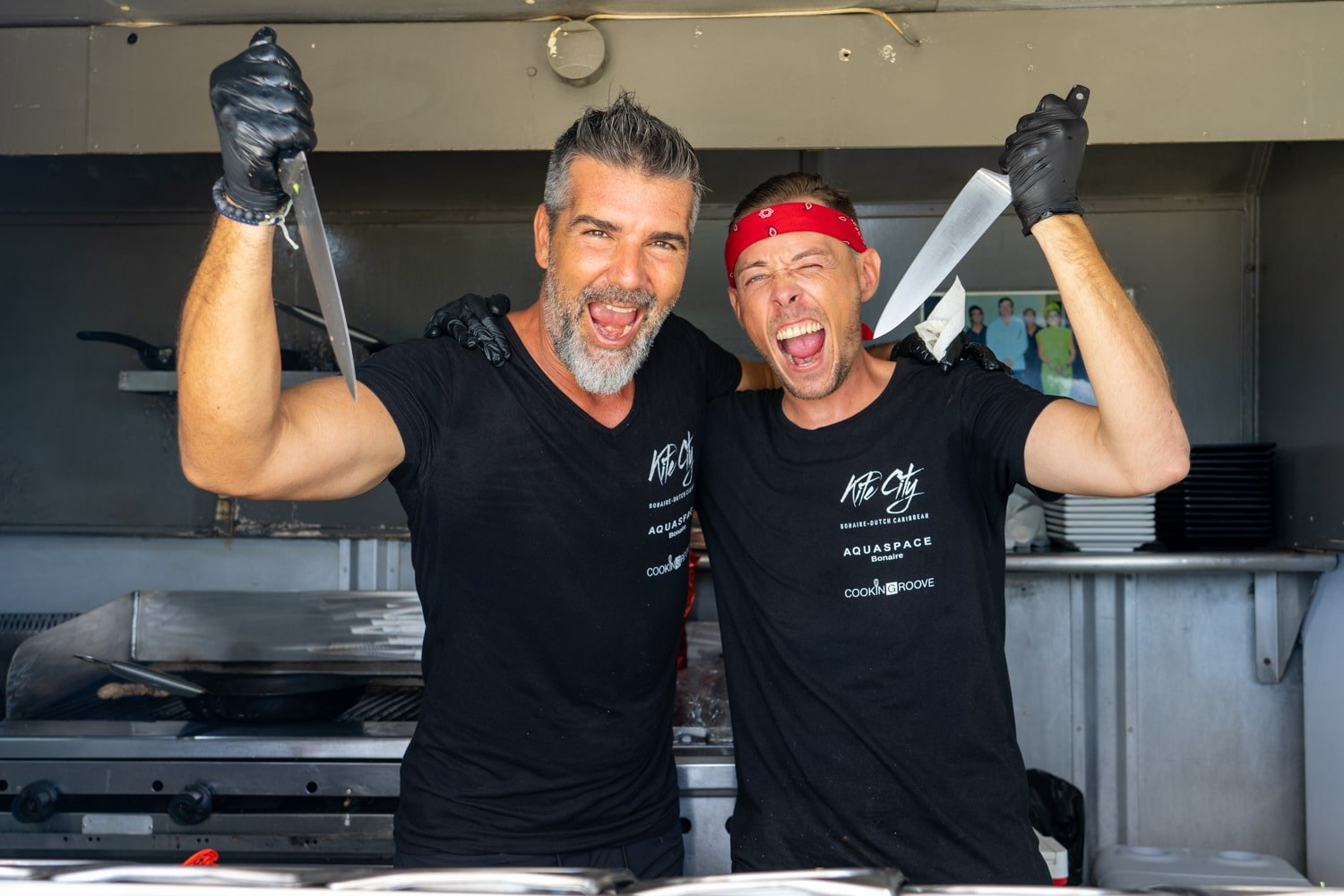
Te Amo Beach, located across from the Flamingo International Airport, is one of the best beaches nearest downtown Kralendijk where you can swim, snorkel, and watch the sunset.
But what makes it even more special is its on-site food truck (Kite City Food Truck) manned by Nuno and Mac—the friendliest burger flippers you’ll ever meet! Their tuna burger comes highly recommended, so we had to give it a try. And it was everything it promised to be. 🤤
All of their plates and cups are reusable too, which is really nice to see! After our feast, we ran into the turquoise water for an afternoon float.
Tip: Bring cash, a towel, a snorkel mask, and a good book because you’ll want to spend a few hours here unwinding.
15. Attend the “Taste of Bonaire” Cultural Event
“Taste of Bonaire” is an event that boasts the local food, art, and music of Bonaire. It takes place several times throughout the year, and we were lucky enough to catch the last one for 2022.

Bonaire’s culture is a mashup of many, and they all come together in lively celebration during this event!
“Musicians on Bonaire proved unusually resourceful in their ability to create new instruments from the discarded fragments of broken tools. A small percussive instrument known as the Chapi is made from the metal end of a hack and is struck with a small metal bar. The blade of a plough serves as a base for the Agan. These, along with the cowhorn and the conch, form some of the traditional musical instruments of Bonaire.
Some of the typical foods of Bonaire include Funchi and Repa (pancakes made of Sorghum meal). These are often served with goat stew and Boontji Kunuku (local beans) or Aros moro (a spiced rice and beans mix). All of these dishes are still an essential part of the Bonairean diet, although the availability of sorghummeal and boontji kunuku depends on the rainy season.”
tourism corporation bonaire Facebook
Make sure to stay updated on TCB’s Facebook page for upcoming festivals and cultural events like Taste of Bonaire.
16. Chill & Grill on a Sunset Catamaran Cruise

Whether among friends or family, going on a catamaran cruise at sunset will surely be one of the highlights of your Bonaire bucket list.
We went with Epic Tours Bonaire on their Chill and Grill Catamaran Tour which took us on an eco-sailing adventure to Klein Bonaire, where we had a guided snorkeling tour (plus one self-guided snorkel) while the crew onboard whipped us up a tasty 4-course dinner.

The views, fresh food, and snorkeling (plus the complimentary drinks!) all made for a fun and relaxed adventure!
17. Go Horseback Riding with Horse Ranch Bonaire
If you love horses and horseriding, then you’ll equally love this next activity to do on Bonaire!

Horse Ranch Bonaire offers the chance to ride in Bonaire’s desert-like countryside, past flamingos and cacti, to a calm bay (Lac Bay) where you can experience wading into the water on horseback.
From the ranch, we followed a dirt road to the island’s beautiful Lac Cai Beach, known for its mounds of Queen Conch shells that, to me, look like graveyard mounds (conch are extremely endangered due to overfishing and consumption—even removing the shells is strictly forbidden).
Once at Lac Bay, we waded in the water to cool off with my horse Topaz while the others nibbled on leaves in the shade.
All in all, the ride lasts about 3.5 hours roundtrip and is in full sun; go prepared with sunscreen and loose clothes that cover your shoulders!
18. Paddleboard Bonaire’s Shoreline
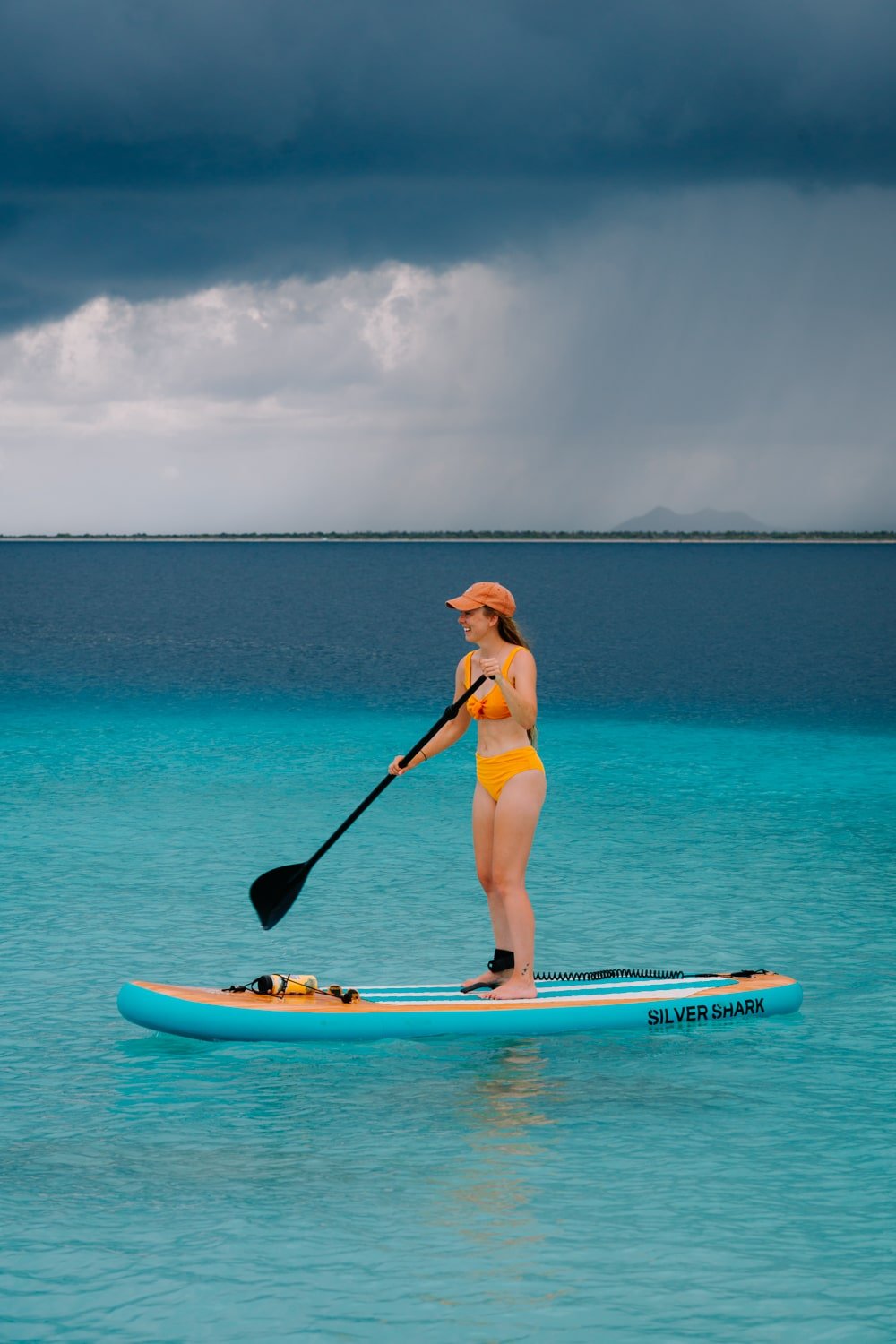
Paddleboarding is a great water activity to do in Bonaire that doesn’t involve diving.
It doesn’t matter if you’ve done SUP before or not, Charley from Paddleboarding Bonaire will make sure you learn the basics on land before you get on the water!
While there are many locations to paddle on Bonaire, we went off the shores of Te Amo Beach following our yoga session.
If you’re eager to explore the turquoise Caribbean waters above the surface, paddleboarding might just be the perfect thing to do for non-divers—and it’s great for all ages and skill levels!
19. Take a Kite or Windsurfing Lesson

Bonaire has incredible places to go diving, kayaking, paddleboarding, and snorkeling, so it’s no surprise that it also boasts amazing kitesurfing and windsurfing around the island.
You will see lots of windsurfers catching waves with Bonaire Windsurf Place at Sorobon Beach.
The kiteboarders go out near Atlantis Beach, in front of Kiteboarding Bonaire where you can—you guessed it—take a kite lesson from the Caribbean’s first-ever Kiteschool.
Whichever your choose, windsurfing or kitesurfing (or both!), Bonaire Island is the perfect place to try it!
Enjoy These Things to Do in Bonaire!
Which one of these land or water activities will you do first?!
Let me know in the comments below what you enjoy most about Bonaire or what you are looking forward to discovering during your time there!
Before you go, read my My Ultimate Bonaire Travel Guide which details Bonaire Island’s commitment to sustainable travel! 🌿
PIN & SHARE THIS BONAIRE ISLAND BUCKET LIST


We have a teacher’s budget, but love to travel the Caribbean via cruise ships. We finally get to spend a very long day and evening in Bonaire in April 2023.
I am saving for the day my dh retires so that we can spend a lengthy stay in Bonaire.
Thank you for sharing your experiences.
Hope to Landsail for the first time, visit one beach to swim with a few turtles, definitely have a tuna burger while relaxing on the beach, and doing a little bit of shopping in the open air local market. If we can swing it, would really love to take a sunset catamaran sailing before we leave port. Counting the days to meeting the people here, seeing a few local places, tasting new foods, land sailing, and being a beach bum in Bonaire.
Ah, that sounds lovely Karen and your comment just whisked me back to some of my own memories on Bonaire. I hope you have the best time! Thanks for reading my blog ☺️
Okay Bonaire is officially on MY bucket list now!! I’d never heard of it, but from what I’ve just read here, it ticks all the boxes in terms of what we look for on our family travels. 🤩🤩
You would love Bonaire, Sharon — the kiddos as well! Horseriding, diving, landsailing… oh my! ☺️